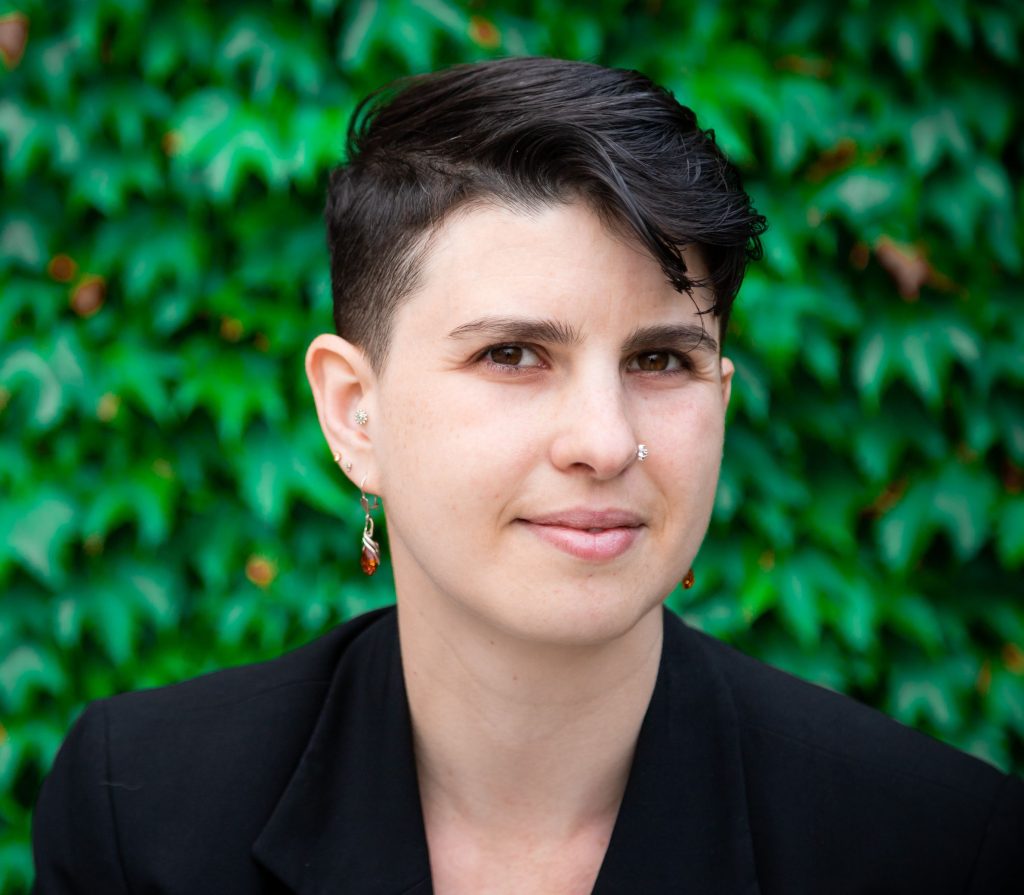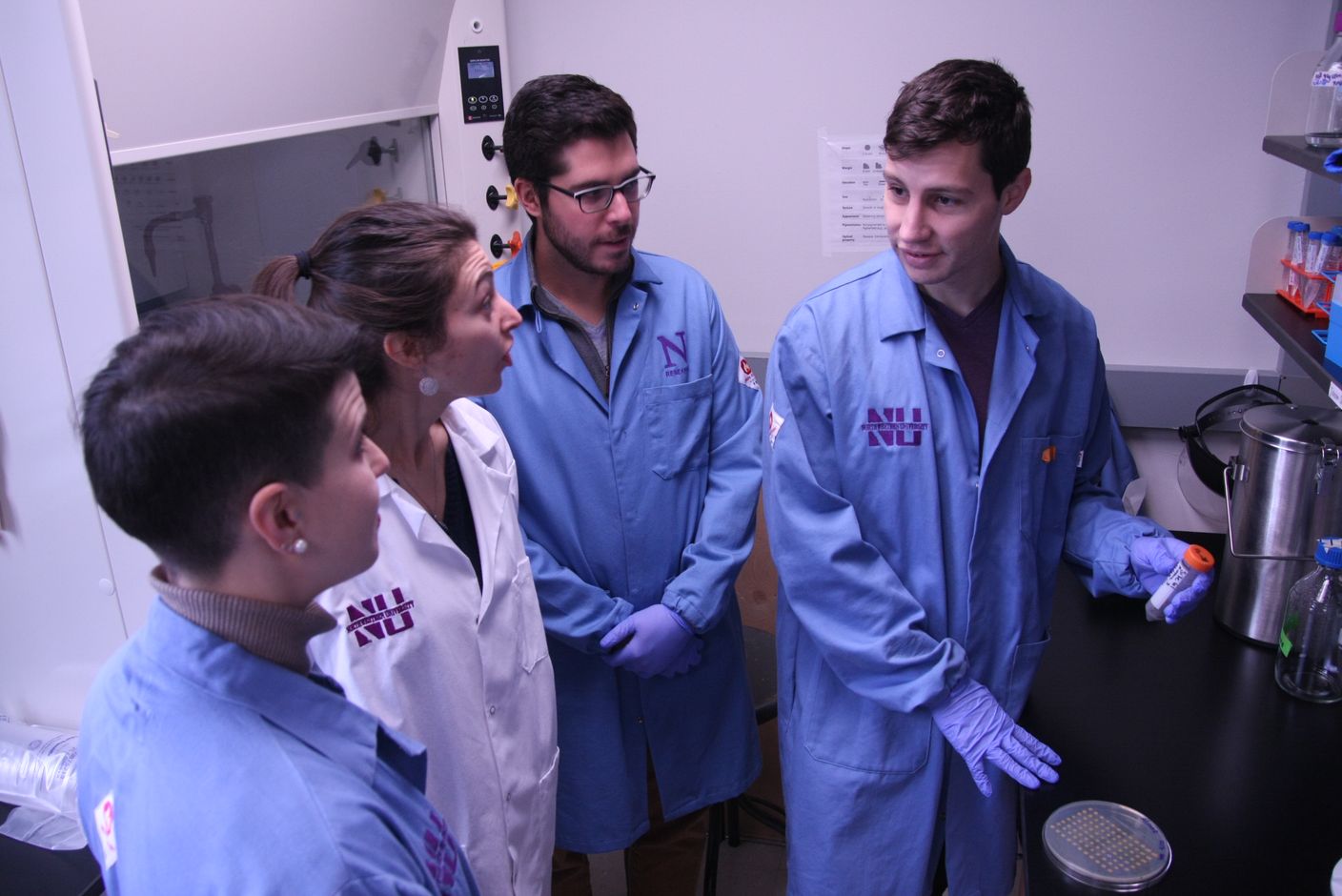By Christian Elliott
Medill Reports

In early 2020, confusing public health guidance about personal safety during a pandemic caused a nationwide flurry of “hygiene theater” – cleaning that distracted from effective measures like masks and physical distancing. By May, the Centers for Disease Control and Prevention updated its guidelines to say SARS-CoV-2 mainly spreads through airborne droplets and the risk of infection from contact with contaminated surfaces or “fomites” is low. Nevertheless, restaurants, airlines, gyms and schools began regularly spraying disinfectant, “deep cleaning” surfaces and installing hand-sanitizer stations. Two years later, many continue to do so.
Erica Hartmann, an assistant professor of civil and environmental engineering at Northwestern University who specializes in indoor microbiology and chemistry, explains the problems with disinfectants and the best ways to learn to live with microbes in a COVID-19 world.
This interview has been edited and condensed for clarity.
There’s been a lot of changing coverage on sanitizing and disinfecting surfaces – whether we should wash produce, whether we should bleach the mail. What mistakes are we making as we try to sanitize everything?
Microbes have been everywhere since way before the pandemic, and they will continue to be everywhere even after the pandemic. They are all around us, in part, because they are us. We have microbes on our skin and in our gut and all over that help us perform vital functions like digest our food. So, this idea that we should live in sterile environments is impractical. It’s just never going to happen. Once we accept that, then we can start to think about more targeted ways of preventing the spread of infectious disease than just blanketing everything in some sort of cleaning agent that may have negative consequences for human and environmental health.
Some bacteria and microbes are good, and some are harmless. Are there negative implications of killing those off?
Yes, there are many. The one that I’m most interested in, in the context of these microbe-chemical interactions, is the evolution of antimicrobial resistance. The more you expose microbes to an antimicrobial, the more chances they have to evolve resistance. So, it’s sort of a numbers game. If you’re using something to kill a virus, you’re incidentally exposing all the bacteria that are around it, and then that gives those bacteria another opportunity to potentially develop resistance. That impacts our downstream ability to clean and disinfect surfaces when we really need to.
It’s also possible that these antimicrobial resistances could be exchanged because bacteria can do something called horizontal gene transfer, where they actually give genes to each other, between a good or harmless bacterium and a pathogen.
The hygiene hypothesis goes something like, “We evolved over hundreds of thousands of years to have all of these microbial exposures, and when we don’t get them, our immune systems go a little haywire.” The thought is that our increasingly sanitized, modern lives are contributing to increased incidences of allergies and asthma because we’re not getting the historical microbial exposures that we used to.
You recently received National Science Foundation funding for a five-year study, “Redefining ‘Antimicrobial’ in the Context of Microbe-Chemical Interactions Indoors.” What have you found so far?
We did a project looking at antimicrobial paints. A lot of paints that you put on a wall contain antimicrobials to protect the paint while it’s in the can. There is, however, paint on the market that’s registered as biocidal – they embedded an antimicrobial in the paint for the purpose of killing microbes that encounter painted surfaces. It’s not just pathogens. All kinds of things are going to encounter these antimicrobial surfaces.
Our work demonstrated regardless of whether the surface was explicitly antimicrobial, most of the microbes that hit that surface died because it’s cold, there’s no water, there’s no food. But if you have that antimicrobial added versus if you don’t, you actually end up enriching for different microbes that survive – most things die, but something always survives. And what survives on the antimicrobial surface is different than what survives on other surfaces.
When I talk about redefining antimicrobial, it’s more nuanced – not how do we bomb everything and sterilize everything, but how do we specifically design for the things that we want so that we’re not increasing antimicrobial resistance while trying to kill viruses?
Do we need a big cultural shift to change how we use chemicals and think about microbes?
Our approach to chemicals, especially in the U.S., is very much innocent until proven guilty. Legislation is very specifically like, “We’re going to ban this particular chemical.” Then the response is often to develop something that’s slightly different, but not necessarily that much better. And then we use that until we find out that that is also a bad thing. So punitive legislation is insufficient. In addition to legislation, like the recent ban on triclosan in hand washes, we need to think about why people might perceive antimicrobial as a selling point.
What advice would you give to an individual trying to navigate the reality of COVID-19 feeling the need to sanitize their hands all the time?
It’s really hard right now because we’re just catching up to the science. We’re constantly having our assumptions challenged. So, I guess my advice would be to take deep breaths and to remember that microbes are everywhere and the vast majority of them are OK. Once we accept that, then we can start thinking about, “What are the specific things that we should be doing to protect ourselves or the people around us?” But the first step is just saying, “All right, there are microbes everywhere, and they’re not going anywhere.”
The pandemic is a good moment to promote good strategies for protecting public health, like vaccination and hand hygiene. At this point, it’s maybe best to share those positive messages rather than condemning anyone.
Christian Elliott is a science and environmental journalism graduate student at Medill. You can follow him on Twitter at @csbelliott.

